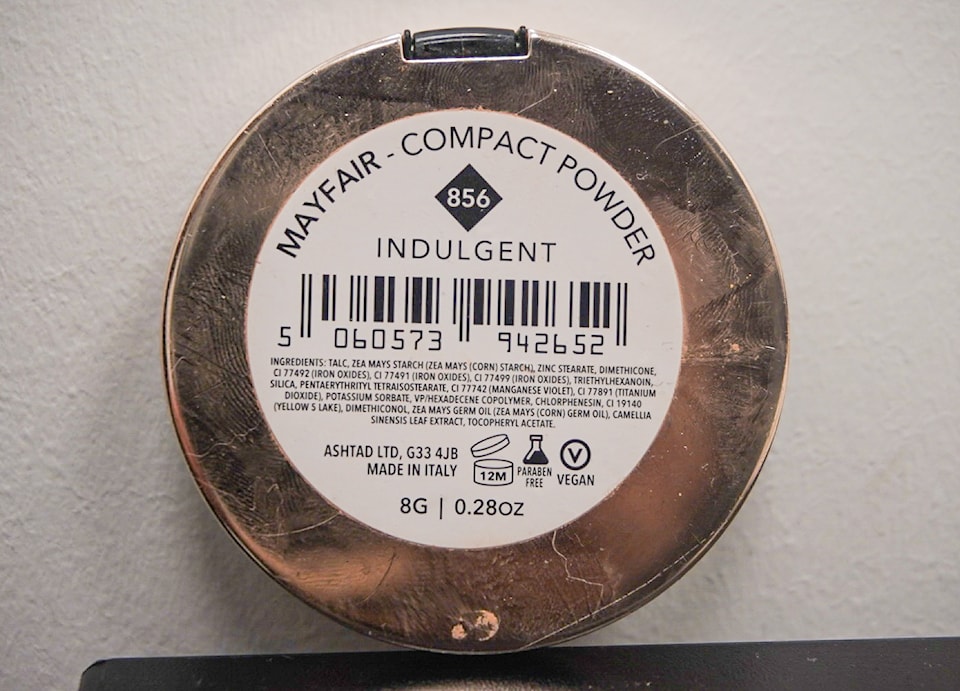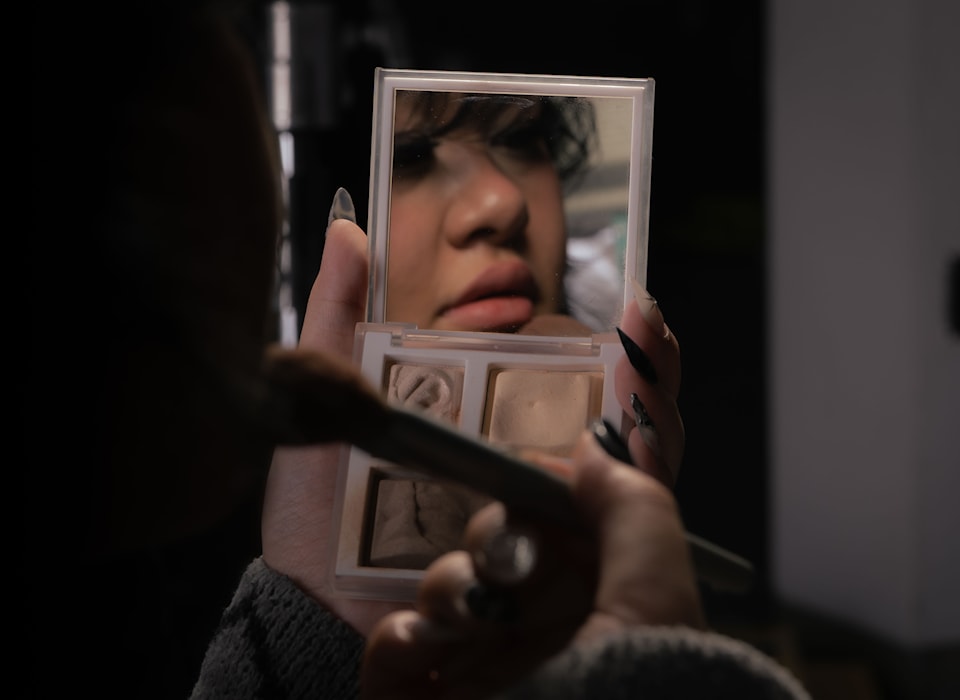
SCRIBE : Where We Create, Build & Inspire
Scribe is a student-run publication based in the GTA that covers everything from social issues to culture and lifestyle. This spring bloom, we tell stories from the mindset of a 20-something-year-old and the conversations shaping their world.
In Toronto’s dynamic beauty landscape, a quiet revolution is unfolding. Young consumers, especially Gen Z and Millennials, are redefining the cosmetics industry by revolutionizing clean beauty.
This movement prioritizes transparency, sustainability, and ethical practices—values that resonate deeply with a generation eager to make informed and impactful choices.
From ingredient lists to packaging, clean beauty is proving that the future of skincare and makeup is about more than just appearances.
Brendan Yhip, a Humber Polytechnic professor with a background in fashion and cosmetic management, remembers the moment he turned to clean beauty.
“I used this really pricey product, face cream, and the way my face, my face and my neck completely broke out. And it wasn't just a breakout—I developed eczema on my eyelids, it was a nightmare,” he said. “So with choosing that product for myself, I had to go down a very natural route. Everything that I use impacted it.”
His personal experience not only healed his skin but also deepened his advocacy for clean beauty.
“The more natural ingredients into it, that to me is quite literally clean beauty. From that perspective, it comes from even the packaging,” Yhip said. “The supply chain of the whole process is, to me, clean beauty because how everybody behind a product is treated, the company culture, that says a lot about what is put into the product and that's integrity.”
Yhip, who has worked with numerous Toronto brands, has also seen this shift reflected in his students.
“We're coming to a place now where the next generations and even our current generations want to live a healthy lifestyle and they want to live longer,” he said.
A 2023 report by Grand View Research projects the global clean beauty market will reach $21.29 billion by 2030, growing at a compound annual growth rate of 14.8 per cent.
According to a 2024 Statista survey, 40% of Canadians prioritize environmentally friendly products, reflecting a growing alignment between consumer values and sustainable practices.
In Canada alone, the cosmetics industry is valued at $1.30 billion in 2024—a number that continues to rise as consumer habits shift.
The push for clean beauty also arises from a stark reality which is the prevalence of harmful chemicals in traditional cosmetics.
The David Suzuki Foundation’s “Dirty Dozen” list highlights 12 common yet harmful chemicals in conventional beauty products, including parabens, phthalates, and formaldehyde-releasing agents.
These ingredients linked to hormonal disruption, allergies, and even cancer, underscore the importance of ingredient transparency in the cosmetics industry.
Dr. Renita Ahluwalia, a Toronto-based cosmetic and medical dermatologist, echoes the growing interest.
“Yes, definitely, I think patients like this notion of clean beauty. They like the idea of natural ingredients,” she said. “I like also that people want to reduce exposure to potential irritants or chemicals that they think could be harmful and that could actually be harmful.”
Dr. Renita Ahluwalia says that not all clean beauty claims are grounded in research.
“Some of it is not really based in scientific evidence. And it's kind of based in more of a fear-based type marketing.”
Ahluwalia emphasizes that clean beauty is not a regulated or official scientific term.
“Basically, anyone can call anything clean beauty. It's not a professional term. It's not a scientific term,” she said. “So for me, if a product is safe and it's an effective product, and it's supported by clinical research to show that it works and it's safe, then those to me are products that are safe and effective, whether it's labeled, you know, clean or not.”
Ahluwalia has seen many patients develop sensitivities because of misleading labels.
“You assumed that these natural things are non-irritating, but many people can react to natural ingredients too. They can cause allergic reactions. They can cause skin sensitivity,” she said.
Dr. Ahluwalia advises consumers to examine labels carefully.
“One little tip that I always tell my patients when they bring in their products is to look at the number of ingredients listed in a product,” she said. “If there are a hundred ingredients there, I caution patients about that, particularly if they have sensitive skin or allergies.”

She warns about fragrances and alcohols.
“These can be synthetic fragrances or natural fragrances, like essential oils in high concentrations are a common cause of contact dermatitis,” she said. “Denatured alcohol is found in a lot of products, particularly in some toners and astringents, and those can be drying or irritating.”
Brendan Yhip agrees.
“If there's a lot of alcohols put into it, it's not exactly beneficial for the skin,” he said. “Anything that has a lot of ingredients, you want to look into those ingredients individually.”
According to Dr. Ahluwalia, some natural ingredients often marketed as safe can still cause problems.
“Coconut oil can increase seborrheic dermatitis, it can be comedogenic at higher concentrations,” she said. “Certain fragrances do that with the sun, citrus being one of them,” referencing phytophotodermatitis.
She emphasizes a science-based approach.
“Focus on the ingredients that are clinically proven to work and look for short ingredient lists in your products,” she said.
Dr. Ahluwalia recommends specific ingredients to look forward to.
“Sunscreen is number one, Vitamin C, peptides, ceramides, hyaluronic acid, niacinamide, and retinol—these are the things that are backed by science.”
Dr. Ahluwalia also warns against do-it-yourself skincare trends.
“You know, unregulated type of skincare ingredients, especially like, you know, those do-it-yourself type of skincare, make your own clean beauty things. I caution against that,” she said. “People can run into problems disrupting the pH of their skin and causing irritation or a flare of their skin conditions.”
Selena Saluta, a student in the Cosmetic Management program at Humber Polytechnic, is one of many young consumers who has started navigating the promises and pitfalls of clean beauty.
“I have heard about the term clean beauty, especially learning about it in ethics and sustainability classes,” she said. “It has a lasting effect on my industry and line of work, so I have to learn about it and I can educate other people on it too.”
Saluta appreciates clean beauty’s benefits but is skeptical of how accessible it is.
“I have considered turning my whole routine to clean, though it isn't as budget friendly, especially being a student,” she said. “There are some products that do a lot of greenwashing, which is consisting of like saying they are green, saying they are ethical and sustainable, but in reality, their practices aren't really doing it and it is just a label that they slap on for the public appeal.”
Greenwashing compounds this issue.
A study by TerraChoice Environmental Marketing identified over 95% of products making environmental claims as guilty of some form of greenwashing.
A study published in Environment, Development and Sustainability found that misleading environmental claims by companies can negatively impact consumer attitudes and reduce purchase intentions.
This emphasizes the need for better certification standards and informed decision-making.
According to the 2022 NielsenIQ report, 75% of Millennials and Gen Z consumers are willing to pay more for sustainable products, reflecting a significant generational shift in consumer expectations.
Annie Raphael-Hervey, a cosmetic management professor at Humber Polytechnic teaches a course on cosmetic ethics and sustainability. She says she believes consumer education is key to meaningful progress.
"Reading packaging is very important, seeing it with the accreditations that are found on different packages is always listed there," she said. “You can go on their website, you can see everything that they're doing. If you're interested in social action, you can see what kind of social action they're actually focused on.”
Hervey is also questioning the the vagueness of clean beauty.
“Clean beauty is one of those that is very subjective. What's clean for me might not be clean enough for people who are really serious about certain things,” she said. “And with nine billion people on the planet, I don't think it makes sense to emphasize a universal standard.”
She further explains how beauty intersects with ethics on a global level.
“Vanilla is from Madagascar predominantly. These farmers work tirelessly to get their crops to fruition, but they're constantly under attack by pirates, pirating people, stealing crops,” she said. “There is an ethical issue with if crops are not good for a year, they literally go starving.”
When it comes to packaging, Hervey highlights both the challenge and the opportunity.
“Brands are embracing new packaging because even though it's a lot to change over when you're in production, it's cheaper,” she said. “People want less packaging, which means less paper, less raw materials.”
She says that the next generation gives her hope.
“There’s optimism, there’s people who are ready to roll up their sleeves and take the baton from people like me and just make this world even better than it is now,” she said.
Dr. Ahluwalia says she believes the clean beauty movement has potential.
“If we could have a clear evidence-based definition of what clean beauty actually is, then I think it would be beneficial,” she said. “Some clean beauty brands do have really good products, but others kind of sacrifice effectiveness and just are putting chemicals that could also be irritating to the skin.”
Yhip says he envisions a future where clean beauty is the standard.
“I personally believe that we are going to come into a space where clean beauty is going to be the only beauty that we will be able to relate to,” he said. “Everybody's going to continue and if not strive to have more of a healthy lifestyle. And this is part of that.”




